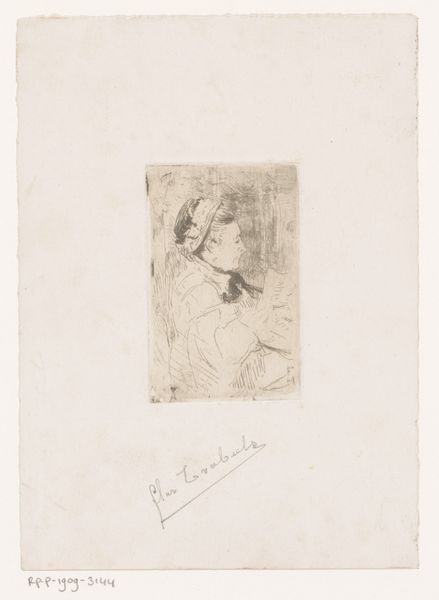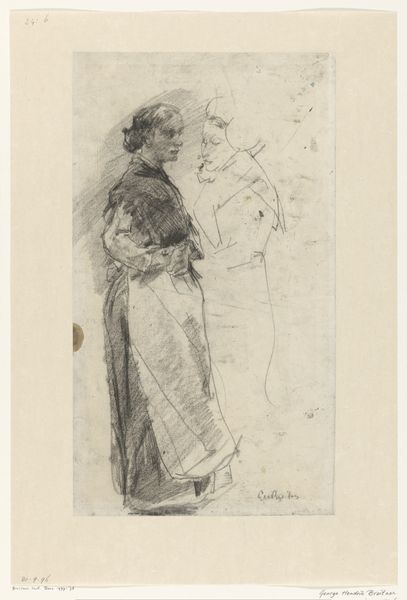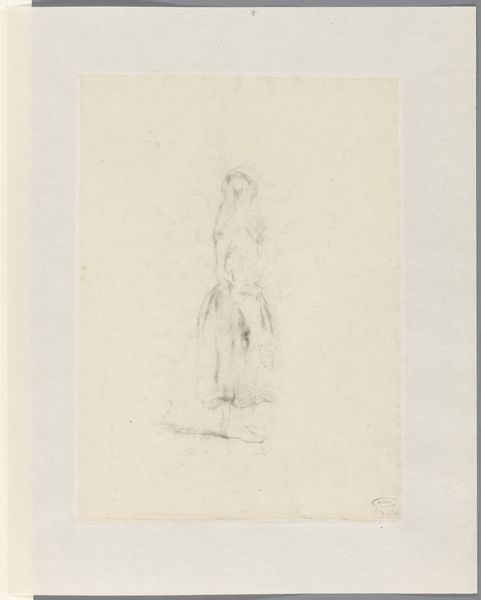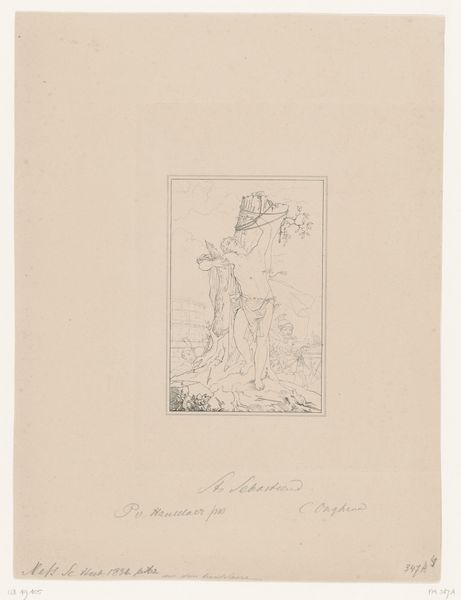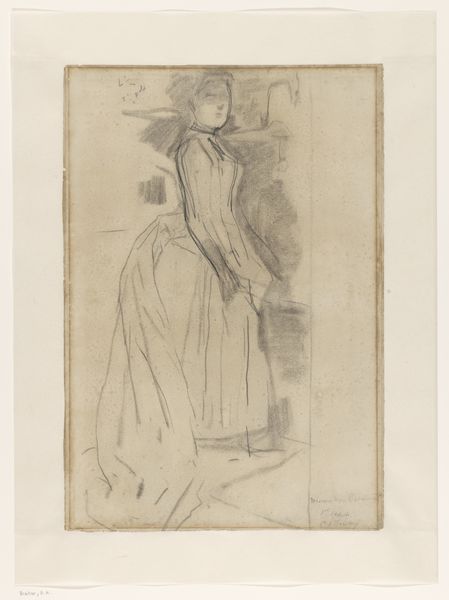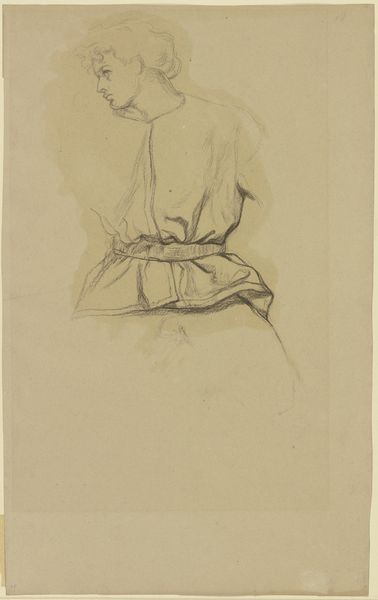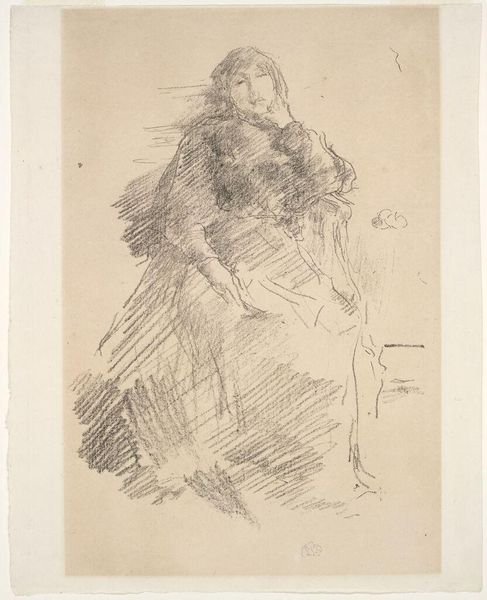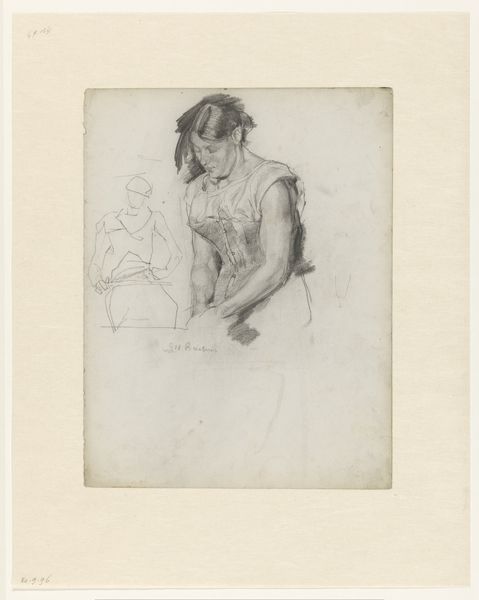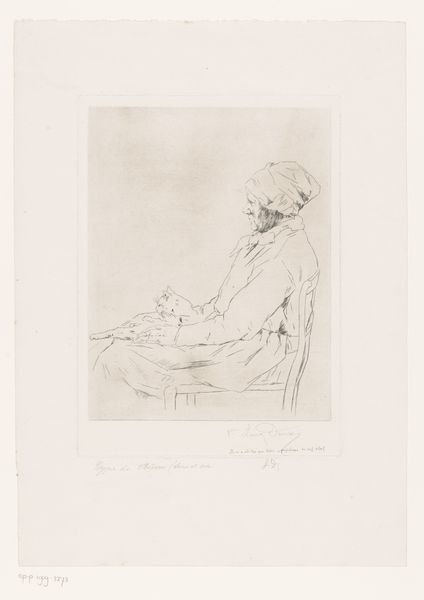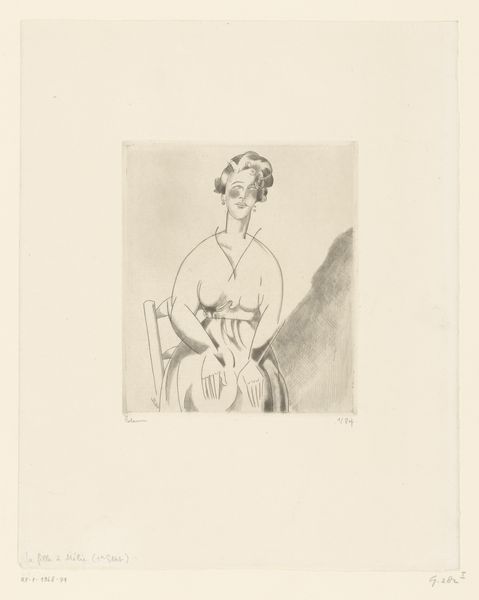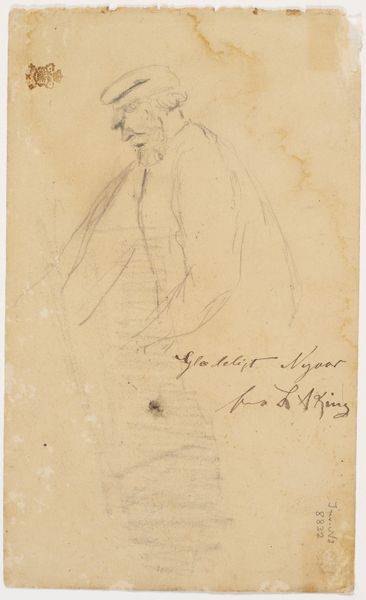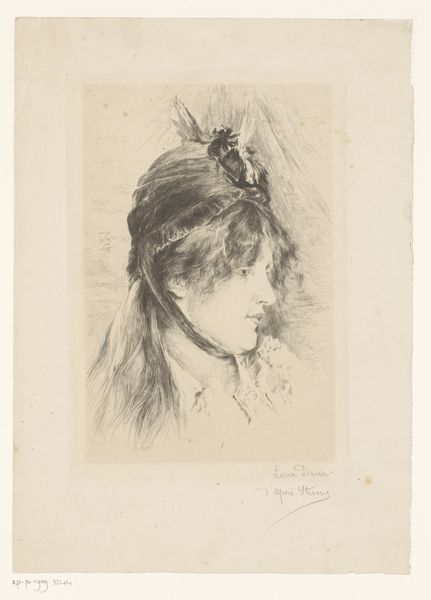
drawing, pencil
#
portrait
#
drawing
#
art-nouveau
#
figuration
#
pencil
#
pencil work
Dimensions: height 194 mm, width 125 mm
Copyright: Rijks Museum: Open Domain
Curator: This is Carel Nicolaas Storm van 's-Gravesande's pencil drawing from 1906-1907, titled "Parijs volkskind van acht jaar," which translates to "Paris child of the people, aged eight." It's currently housed right here at the Rijksmuseum. Editor: My immediate impression is one of fragility. The slightness of the lines, the averted gaze... she seems incredibly vulnerable, almost disappearing into the paper itself. Curator: Indeed. 's-Gravesande was deeply interested in capturing fleeting moments and the everyday lives of ordinary people. The work offers insight into artistic training and workshop labor as well. Observe the careful rendering of the child’s garment; even a modest shift bears considerable weight within this composition. Editor: And her clothing seems significant—a slightly ruffled collar, loosely fitted dress. These visual cues read as signs of her station. A question then arises: is the drawing meant as an observation of this young girl’s existence, or does the very act of depicting her lend her a sense of elevated status? Curator: I'd argue it's both. Consider the context of Art Nouveau, in which this drawing appears to be styled. Even in representing everyday realities, the style imbues them with inherent aesthetic and decorative value. This extends to her likeness—her posture, the fall of her hair. Editor: Precisely. Note how that wispy strand of hair falling across her brow seems weighted with meaning; it carries a universal association with innocence. In portraying her profile, he invites the viewer to consider a broader idea of childhood during this period. There is a longing for simplicity evoked in this quick study, a yearning for perhaps a pre-industrial life. Curator: Right, though let's not forget the means of this portrayal. Graphite wasn’t cheap! Who purchased the art supplies and supported this sort of work? What about access to child models of particular stations, etc.? Even perceived "simplicity" required economic inputs and decisions on the artist’s side. Editor: True. These sketches never exist in a vacuum; they invariably speak volumes regarding the complex relationships and resources underpinning every artist's practice. Curator: Well, the work allows for interesting study into the period as much as it allows for thought of portraiture! Editor: Yes, it’s a potent glimpse, and quite moving.
Comments
No comments
Be the first to comment and join the conversation on the ultimate creative platform.
